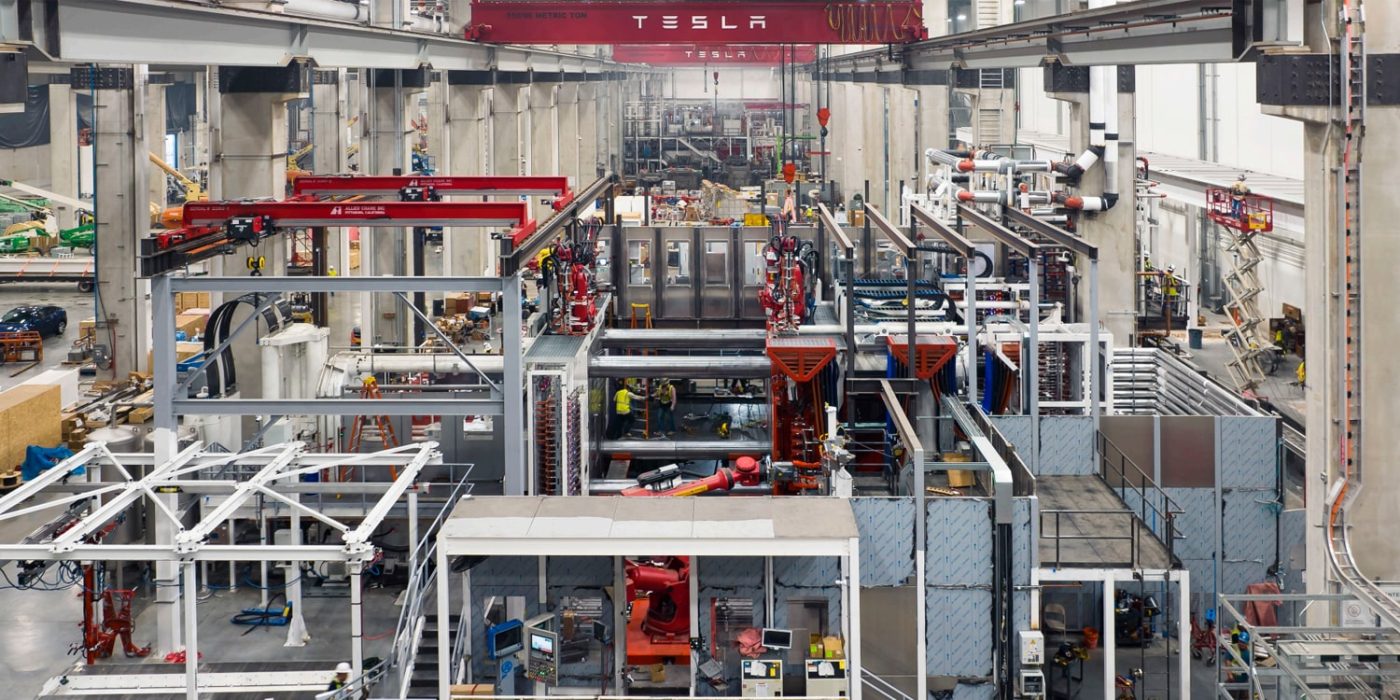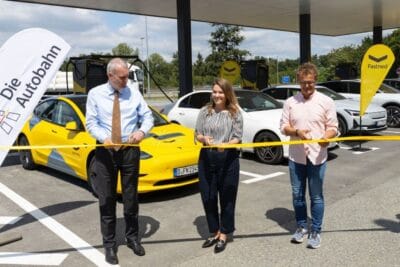Tesla is working on a new manufacturing process called “unboxing”
The new production process called “unboxing” could fundamentally change the industry, the German Handelsblatt writes. It involves a factory without assembly lines, with drastically fewer employees and significantly more automation. “Unboxing should make it possible to build cars from the inside out instead of from the outside in as was previously the case – and thus not only produce them faster, but also more cheaply,” says the business newspaper.
Tesla itself is said to have invited industry analysts to a factory tour at Giga Texas in Austin to promote the new production method. A report by Chris McNally, an analyst at the investment bank Evercore ISI, has now revealed some details, but not many – the project, also known internally as “NV9X,” is largely secret and under the control of Elon Musk himself.
However, McNally explains why the halls in Austin are higher than in typical car factories. Tesla is apparently working on several floors, with conveyor belts running under the hall ceiling to produce tools and parts. The belts on the floor are no longer kept as straight as possible in the sense of a classic assembly line, but instead, there is talk of “s-shaped production lines and autonomously moving platforms.”
The upcoming compact model will first be produced in the Giga Texas, before the model is also built in the Giga Mexico, which is currently under construction. It could also roll off the assembly line in Grünheide. Most recently, there were rumours that Tesla had discontinued developing the compact model with steering wheel and pedals to concentrate fully on the Robotaxi on the same platform. Although Musk has announced the premiere of the Robotaxi for 8 August, it is currently difficult to say whether Tesla will actually abandon the more conventional private customer model.
Flexible modular production instead of linear assembly
Tesla is constantly pushing the boundaries of production technology – others are thinking about it, and Tesla is doing it. For example, gigacasting huge die-cast parts to reduce the complexity and steps needed to produce a vehicle frame. However, Tesla is also known for its announcements and, in some cases, for backing away from announcements it has made – for example, in the case of its Robotaxis. Musk had already confirmed in October 2022 that Tesla was working on a new platform for smaller electric cars with significantly lower production costs. However, it was not yet known which approaches he intends to use to halve costs.
The US industry consultancy Caresoft had started looking for clues at this point. According to the Handelsblatt report, Caresoft presented its study on Tesla’s “unboxing” principle at a VDA conference in Berlin a few weeks ago. According to the report, Caresoft “painstakingly recreated” a diagram of the production processes based on a presentation by Tesla at Investors’ Day. The result: Tesla could build a new factory up to 30 per cent more cheaply, resulting in savings of almost 500 million dollars in the US. Production itself should become cheaper with the new modular construction method, as 40 per cent fewer personnel are required, and the cars can be built 25 per cent faster. Tesla itself had previously stated 30 per cent.
These modules are at the heart of the production logic. Instead of producing the bodyshell, painting it in one piece and then installing components such as the drive and interior in the vehicle, only the side panels, doors and other individual parts are produced and painted in the press shop, for example. At the same time, the floor panel and the front and rear elements are manufactured independently of each other in the foundry using gigacasting. In assembly, personnel and robots build the vehicle with the interior based on the base plate with the battery. As the body is not yet in the way, the work is more ergonomic for people and can be automated more easily with robots, reducing costs.
At the same time, the electric motors, which are small compared to complex combustion engines, are pre-assembled in the front and/or rear elements and the chassis is attached before these elements are attached to the floor panel. Only at the end are the large side panels and the rest of the bodywork attached – in classic car construction, this would be one of the first steps.
However, it is unclear how Tesla intends to solve some of the challenges associated with this production approach. For example, the frame and body parts must be stably attached at the end without damaging the already assembled interior – it is not for nothing that the welding work on a body is completed before the installation of other parts. And if individually painted parts are joined together instead of all being painted at the same time in a dip tank, not only can there be subtle differences in colour, but corrosion protection may also be impaired.
At the VDA meeting in Berlin, the “production director of a major German premium manufacturer” reportedly said this is “not compatible with our quality promises,” according to the Handelsblatt newspaper. However, the traditional car industry has also said the same thing about Tesla’s gigapresses.
handelsblatt.com (in German)





0 Comments